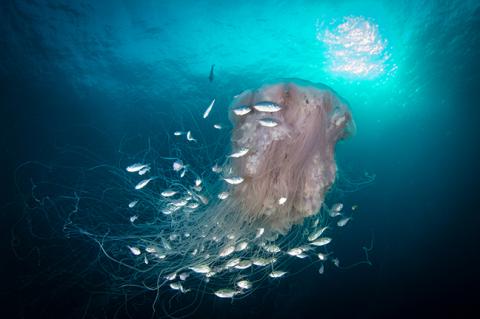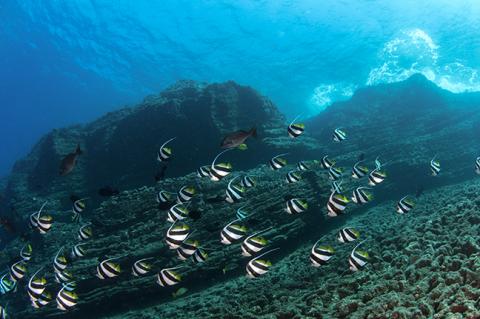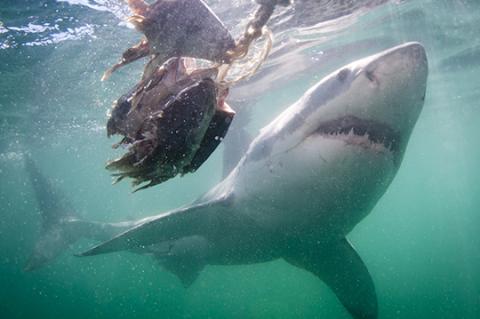Indonesia's North Sulawesi
The current felt like the wind on a breezy day, and it was blowing me past the coral-covered sheer wall that disappeared over 60m (200ft) below me. Looking directly down, I noticed the color blue fading into slightly darker shades and finally into darkness, at the edge of how far I could see.
To my right was a gorgeous wall of color. Pink and purple soft corals extended fully, reaching out into the current to feed on plankton passing by and numerous giant purple barrel sponges extending away from the wall. Looking to my left into the open water was more blue and thousands of fish.










